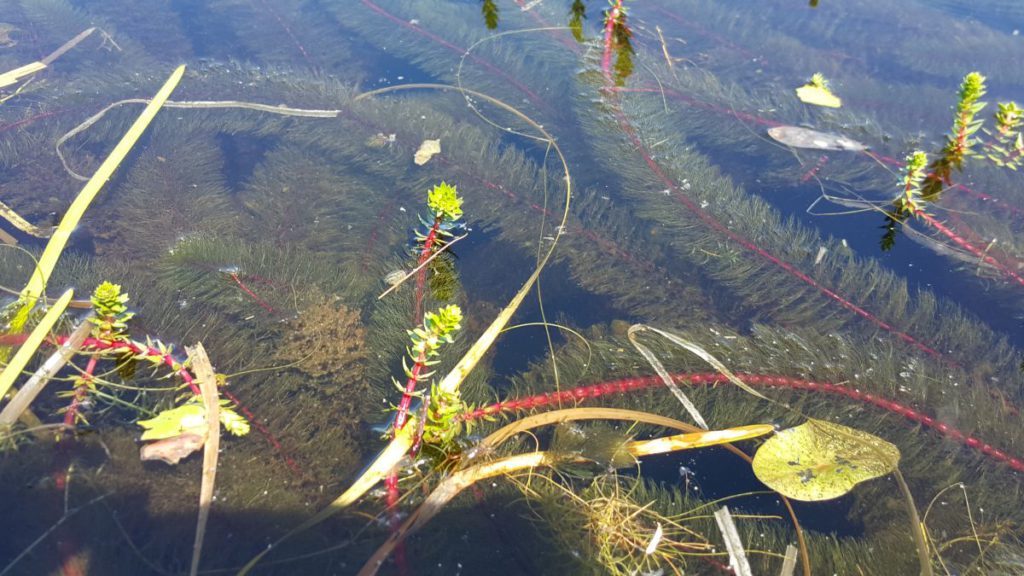Invasive Species

What are non-native species?
A plant or animal that has been transported and is now living outside its native range is known as a non-native species. For example, a plant that originated in Asia, but is now found living in Maine is non-native.
What are invasive species?
An invasive plant or animal species is one that is non-native and reproduces or spreads aggressively in its new environment. Invasive species often take over and displace the native species that would normally be found in an area. For example, Variable Leaf Milfoil can displace the native plants that would typically be found in Maine’s lakes and ponds.
Invasive Aquatic Plant Boat Inspections
Variable-leaf watermilfoil, an invasive aquatic plant, has been identified in about twenty-five locations in Sebago Lake. In an effort to both control the spread of this invasive plant and prevent the introduction of other invasive plants, the District conducts aquatic invasive plant inspections at the Standish Boat Launch. The inspections performed by the District are part of a statewide inspection program administered by the Maine Department of Environmental Protection.
For more information: https://www.maine.gov/dep/water/invasives/
Invasive Plants and Animals in Sebago Lake
Chinese Mystery Snail (Cipangopaludina chinensis malleatus)
Chinese Mystery Snail is native to southeast Asia. It was brought to the US for Asian food markets but also released into the environment from aquariums. The snails are larger than the largest native snail in Maine. Chinese Mystery Snails can outcompete and displace native snails and also be a host for various parasites and diseases. For more information about Chinese Mystery Snail, visit https://www.mainevlmp.org/programs/other-programs/chinese-mystery-snails/.
Variable Leaf Milfoil (Myriophyllum heterophyllum)
Variable Leaf Milfoil is an invasive aquatic plant that has been growing in Sebago Lake for decades. It is an aggressive, mat forming plant that prefers mucky substrate and can grow in water up to 8 feet deep. The good news for Sebago Lake is that most of it is too deep and too rocky to support Variable Leaf Milfoil. It has, however, invaded many coves and shallow areas around the lake. The infestation is particularly bad in Sebago Cove at the north end of the lake. The Lakes Environmental Association has been working to remove it since 2016. For more information about Variable Leaf Milfoil, visit https://extension.umaine.edu/publications/2530e/.
If you have questions about Variable Leaf Milfoil on Sebago Lake, please email sebagolake@pwd.org.
Northern Pike (Esox lucius)
Northern Pike are not native to Maine and were introduced illegally in the 1970s. They have since spread to many waterbodies around the state and are found in Sebago Lake. Northern Pike are a threat to Sebago Lake’s landlocked salmon fishery because pike eat smelts, the primary food for the salmon, and they also eat the salmon themselves. For more information about Northern Pike, visit https://www.maine.gov/ifw/fish-wildlife/fisheries/species-information/no….
For more information:
Maine Department of Environmental Protection – Invasive Aquatic Species Program
Lake Stewards of Maine – Volunteer Lake Monitoring Program
Lakes Environmental Association
Maine Department of Inland Fisheries and Wildlife – Fishing in Maine